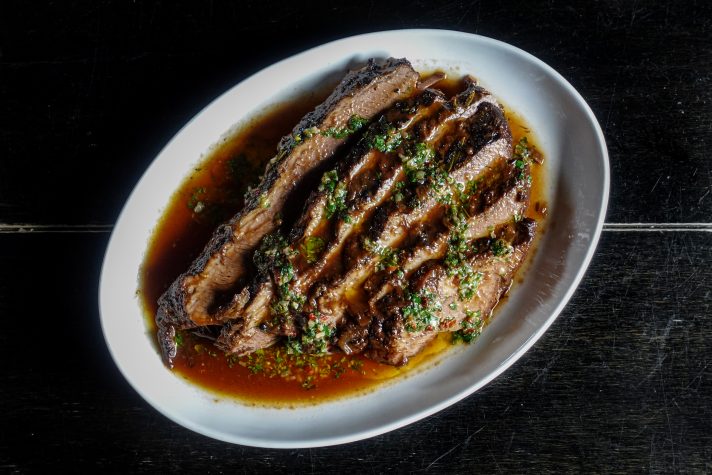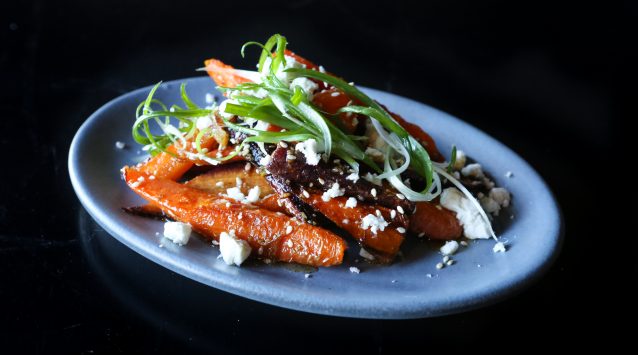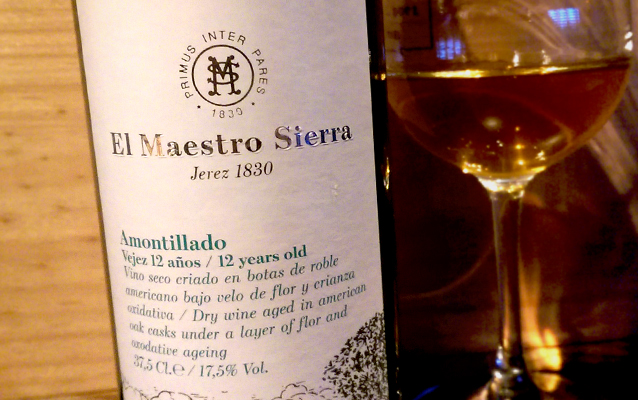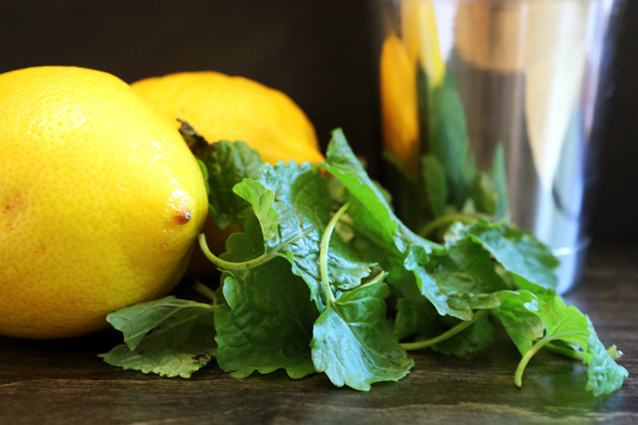As we head into the end of 2023, we’ve recently celebrated both our nine year anniversary as well as Thanksgiving. With a spirit of gratitude filling the restaurant, it seemed like a good time to offer a little thank you recipe to our guests. If you’re looking for an easy meal that’s still appropriately celebratory, this just might be it. Indeed, we offered these during the pandemic as holiday takeout meals, and the response from guests was great.

Red Wine Braised Brisket w/ Salsa Verde
Braised Brisket
- 6 lbs (or so) of brisket, preferably from the flat
- 2 cups dry red wine
- 2 celery ribs, coarsely chopped
- 1 carrot, coarsely chopped
- 1 large onion, coarse chopped
- 4 Tbsp olive oil
- 5 sprigs, fresh thyme
- 5 sprigs, fresh rosemary
- 1 bay leaf
- 10 cloves garlic, peeled
- 3 quarts chicken stock
- Salt and pepper
Marinate the brisket in a large ziplock or Tupperware. Combine meat with wine, onion, carrot, celery. Seal and marinate in the fridge overnight, 8-12 hours,
The next day, preheat the oven to 300F. Remove the meat and place a on rack to drain. Separate the wine and veggies and reserve for later use. Pat the brisket dry and season with salt and pepper. Heat a Dutch oven or heavy duty casserole to medium-high heat. Add oil and brown the meat all over. Once browned, remove to a plate and add the reserved vegetables. Cook until beginning to brown, then add the reserved wine and reduce to half. Add the stock and simmer. Return the meat to the pot with the fresh herbs. Simmer, cover, then move to the oven.
After 4 hours, check for doneness: it should be quite tender but not falling apart. If necessary, continue to cook and check in a half hour or so.
When done, remove the brisket and cover/wrap with foil to rest. Strain the liquid into a pot to simmer, skimming the fat that floats to the top. Reduce to your liking, but we’re looking for a light sauce, not gravy. If needed, add more salt and pepper to season.
Do ahead: At this point, you can store the brisket in the sauce and gently re-heat it the next day in the oven. Slice thinly and serve with the sauce spooned over the top or in a bowl to the side. Top with a little salsa verde (below).
Salsa Verde
- 1 cups flat parsley, finely chopped
- 1/4 cup mint, finely chopped
- 1/4 cup oregano, finely chopped
- 1/4 cup rinsed capers, finely chopped
- 2-3 pickled fresno chiles (or other chile, adjusted for heat level), seeded and finely chopped
- 1 Tbsp minced garlic
- 1 Tbsp minced shallot
- Zest of 2-3 lemons
- Extra virgin olive oil
Combine all dry ingredients. Season with salt and pepper. Add oil to cover. Mix and incorporate. Taste and adjust salt and pepper if necessary. Add a small squeeze of lemon juice right before serving.





